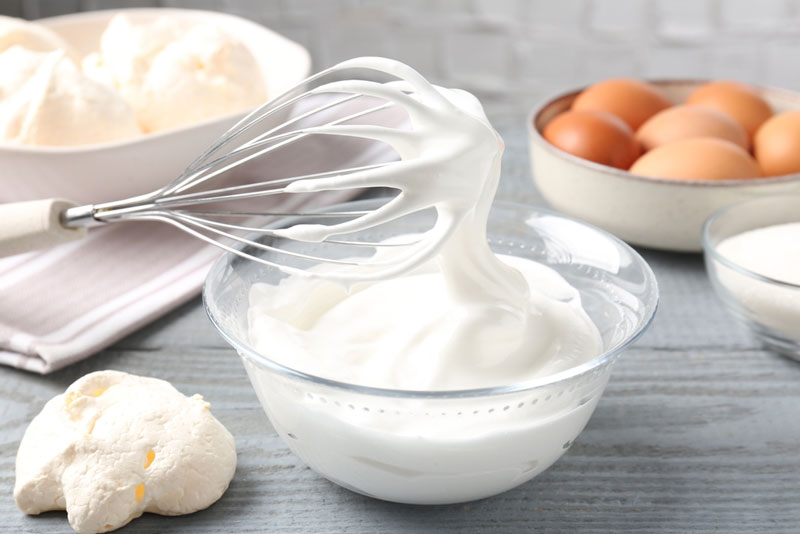Have you ever wondered if our furry friends could enjoy a little dab of whipped cream? The burning question on many cat owners’ minds is can cats eat whipped cream? The answer, while not entirely simple, leans towards no, at least not regularly. Whipped cream isn’t toxic to cats, but it’s not a suitable treat either. There are better options out there for our feline pals.
Whipped cream is made primarily of cream and sugar. While they may not cause immediate harm, our kitty cousins don’t digest dairy as well as we do. Plus, the sugar content isn’t doing them any favors long-term. It’s always best to think of healthier options that cater to their dietary needs.
Stick around as we explore the ins and outs of whipped cream and its effects on our beloved cats. We’ll cover everything from how much they can safely consume to the potential risks and what healthier substitutes are available!
You might also be interested in: Can Cats Eat Strawberry Ice Cream?
Can Cats Eat Whipped Cream?

When we ask if cats can eat whipped cream, we first consider its composition. Whipped cream is primarily made from heavy cream, sugar, and sometimes artificial flavorings or stabilizers. While the primary ingredient is dairy, which many believe is a cat-friendly food, it’s crucial to remember that not all cats can handle dairy products well. Many cats are lactose intolerant, meaning they lack the enzyme lactase that helps digest lactose, the sugar found in milk and dairy. Without this enzyme, eating whipped cream might lead to unpleasant digestive issues for your little furball.
Even if your cat isn’t lactose intolerant, a treat like whipped cream isn’t ideal for daily consumption. Cats are obligate carnivores, meaning their diets should primarily consist of meat. Giving them a high-sugar, high-fat treat can lead to weight gain, diabetes, and other health issues. Although a tiny amount of whipped cream might not hurt them, moderation is key, and it should never replace a balanced diet.
In the grand scheme of things, whipped cream is not a nutritious option for our cats. While it may be fun to watch our furry friends lick up some cream off our fingers, we should prioritize their health. So, when it comes to feeding cats whipped cream, the answer is best left as an occasional treat rather than a regular festivity.
How Much Whipped Cream Can Cats Eat?
If you’ve decided to let your kitty indulge in a tiny bit of whipped cream, you may wonder, how much is too much? We should always be conscious of portion sizes. For an average-sized cat, just a teaspoon of whipped cream occasionally is more than enough. Think of it like a celebratory snack rather than everyday food. Like us, cats can savor the little things without overindulging. Even if they have a strong desire for it, it’s important to show restraint and not create a habit of giving them this treat.
When we share goodies with our pets, we often want them to enjoy it just as much as we do. It’s hard not to give them a little more when we see their eyes widen in delight. However, we need to keep in mind that a cat’s stomach is quite different from ours. The high-fat content in whipped cream can lead to tummy troubles, including diarrhea or vomiting, especially if your kitty’s stomach isn’t used to rich foods.
Also, consider the potential for weight gain. If we regularly feed our cats treats loaded with sugars and fats, we can easily tip the scales in a negative direction. It can even lead to obesity if we aren’t careful and continue to give these treats often. Therefore, let’s keep it to an occasional tiny taste and save the planets of whipped cream for birthdays or special moments.
What can we focus on instead? Finding healthier alternatives to keep our kitties happy and healthy should be our priority. There are many fruits and veggie options that are much better for them in small amounts. Even treats specifically designed for cats are a great option! So, while whipped cream might seem fun and cute, we have to remind ourselves that it isn’t the best choice for our furry companions.
Benefits Of Whipped Cream To Cats
1. Bring Joy and Excitement: While there are no significant benefits of feeding whipped cream to cats, if your kitty occasionally enjoys a dab of this delightful treat, it can bring them joy and excitement. Sometimes, happiness is found in the little things. Seeing your feline friend happily licking whipped cream off a spoon can warm your heart.
2. Bonding Experience: It’s important to note that whipped cream can act as a bonding experience between you and your furry partner! Sharing a dopey moment with your cat, where they curiously take a little lick of whipped cream, can create everlasting memories and strengthen your bond.
3. Tool for Administering Medications: If your cat enjoys whipped cream, it can be a useful tool for administering medications. Mixing a small amount of cat-safe medication in whipped cream can ease the process if your pet is on medication and gives them something tasty to look forward to.
4. Helps Stimulate Curiosity: The fun factor can’t be disregarded either! Cats have complex personalities, and indulging them occasionally might encourage playfulness or help stimulate their curiosity. What a joy when our furry friends bring a spark of joy into our lives, right?
5. Source of Entertainment: Lastly, whipped cream can be an excellent source of entertainment. Cats, especially, enjoy chasing things. If you were to place a dollop of whipped cream on the floor, there may just be a delightful cat chase that ensues. Just be careful that the whipped cream isn’t scooped up too quickly, as nobody wants a tummy ache!
Dangers Of Feeding Whipped Cream To Cats
Even though whipped cream is not toxic to cats, potential risks should concern us as pet owners. We cannot ignore the fact that whipped cream comprises dairy and sugar, which could lead to consequences that may not be evident immediately. The first primary risk is lactose intolerance. As we mentioned earlier, many cats are lactose intolerant. Feeding them a treat that contains dairy can result in digestive difficulties, including gas, diarrhea, and vomiting, regardless of the tasty delight it offers.
Another danger lies in the level of sugar. Cats are not designed to digest sugars in the same way humans do. Feeding whipped cream to our furry friends, laden with sweetness, can lead to weight gain and other health issues related to this, such as diabetes. No cat parent wants to see their beloved feline struggle with health, so it’s wise to take preventative measures.
While it’s unlikely for whipped cream to cause severe reactions, we must stay vigilant about how our cats react afterward. Pay attention to any signs of discomfort after giving them this treat. If you notice your pet behaving differently, it might be best to call your veterinarian for advice.
Lastly, whipped cream can lead to bad habits. Once your pet experiences the taste of indulgence, they might want more and more! Cats can get fixated on tasty treats, and it’s generally easy to fall into the mindset that a little bit won’t hurt. But remember, little by little can turn into a big problem as they start expecting these treats regularly. As responsible pet owners, we must keep them in tune with a balanced diet rather than sugary snacks.
Substitute Of Whipped Cream For Cats
1. Greek Yogurt: If we find ourselves wanting to share a dessert-like treat with our kitties, why not try plain Greek yogurt? It’s much healthier and can provide a similar creamy texture! Make sure it’s plain with no added sugars or artificial flavors.
2. Pumpkin Puree: Another alternative is pumpkin puree. Not only is it delicious for our furry friends, but it’s also good for their digestion. Just make sure it’s pure pumpkin without any added sugar or spices.
3. Cat Milk: If your cat enjoys dairy, consider cat milk. It’s lactose-free, so it provides the creaminess many cats love without the worries that come with regular dairy. Just be sure to read the labels to keep an eye out for any additives.
4. Tuna or Chicken: Another option is canned tuna or chicken in water, one of their favorites! Mixing a little with some warm broth can be a terrific treat that they’re sure to adore.
5. Cat Treats: Homemade cat treats are a hit! There are plenty of recipes for healthy cat snacks that can satisfy their taste buds without the sugary or fatty effects of whipped cream. Plus, we can have fun in the kitchen mixing and baking! You could even make a homemade cat ice cream using mashed bananas and blended with a bit of cat-safe broth.
Can Cats Eat Whipped Cream? Frequently Asked Questions
Is Whipped Cream Safe For All Cats?
Whipped cream is generally safe for most cats in tiny amounts. However, not all cats can tolerate dairy, so it’s essential to keep an eye on how your specific cat reacts to it.
What Should I Do If My Cat Eats A Lot Of Whipped Cream?
If your cat indulges in a considerable amount of whipped cream, monitor them for any signs of distress. Look out for vomiting, diarrhea, or any unusual behavior. If you notice something concerning, reaching out to your veterinarian is the best course of action.
How Can I Keep My Cat Healthy While Allowing Treat Time?
Incorporate healthier treats into their diet! Balancing a nutritious base diet with occasional bits of cat-safe treats can give them indulgence without compromising on health. Always opt for treats designed for cats when possible.
What If My Cat Likes Whipped Cream Too Much?
It’s important to set boundaries! If your cat starts meowing for whipped cream every time you eat it, try to redirect their attention with catnip toys or healthy snacks instead.
Can Whipped Cream Make My Cat Sick?
While whipped cream itself might not be harmful, it can cause digestive issues for cats that are lactose intolerant. It can lead to upset stomach if they consume too much. Always keep a close watch on how they respond to any food changes.
Final Thoughts
In conclusion, while whipped cream may not be toxic to cats, it’s not an ideal treat. The potential risks outweigh the benefits, especially when considering the long-term health of our furry companions. Staying responsible in our choices allows us to keep our cats healthy and happy! Let’s focus on providing better alternatives that contribute positively to their diet and lifestyle.
Whether it’s incorporating healthy treats, investing in quality cat food, or engaging in playtime, we have so many ways to show our cats how much we love them. So next time you think about sharing whipped cream with your whiskered friend, remember these insights, and opt for healthier choices. If you’re interested in learning more about what cats can eat, check out our blog. There are numerous articles on various topics, including treats that are safe for cats like fruits and veggies. You can also explore what cats shouldn’t eat like mustard and find insights that could help in meal planning.


